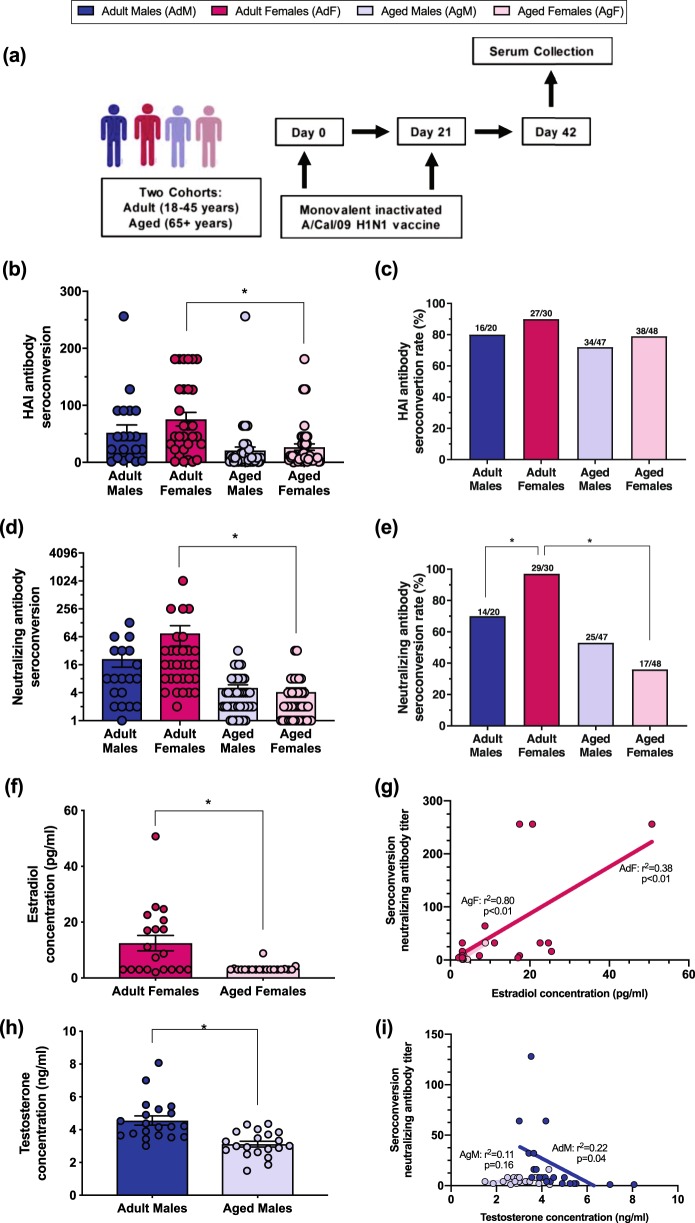Fig. 1.
Adult females of reproductive ages have greater seroconversion to a monovalent A/Cal/09 H1N1 vaccine, which is associated with concentrations of estradiol. Adult (18–45 years) and aged (65+ years) males (dark or light blue, respectively) and females (dark or light pink, respectively) were vaccinated with an inactivated, monovalent 2009 H1N1 vaccine and serum was collected prior to and at day 42 (i.e., 21 days after boost) (a). Seroconversion of hemagglutination inhibition titers after vaccination (b) and the proportion of individuals with ≥4-fold increase in HAI antibody titers after vaccination (i.e., rate of seroconversion) (c) were measured. Seroconversion of neutralizing antibody titers after vaccination (d) and the rate of seroconversion after vaccination (e) was measured. Serum concentrations of estradiol (E2) and testosterone (T) were measured (f, h) and the correlation between hormone concentrations and neutralizing antibody seroconversion was quantified using a linear regression model (g, i). Data represent mean ± standard error of the mean and significant differences between groups are denoted by asterisks (*p < 0.05) based on one-way ANOVAs (b, d), Chi square analyses (c, e), or t-tests (f, h). n = 20 adult males, 30 adult females, 47 aged males, and 48 aged females

